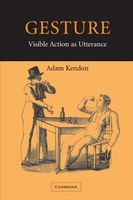Adam Kendon
About
Adam Kendon was one of the world's foremost authorities on the topic of gesture, which he viewed broadly as meaning all the ways in which humans use visible bodily action in creating utterances including not only how this is done in speakers but also in the way it is used in speakers or deaf when only visible bodily action is available for expression. At the University of Cambridge, he read Botany, Zoology and Human Physiology, as well as Experimental Psychology for the Natural Sciences. At the University of Oxford, he studied Experimental Psychology, focusing on the temporal organization of utterances in conversation, using Eliot Chapple's chronography. Then he moved to Cornell University to study directly with Chapple on research leading to his D. Phil. from Oxford in 1963. His thesis topic—communication conduct in face-to-face interaction—spelled out the interests he would pursue in subsequent decades. He is noted for his study of gesture and sign languages and how these relate to spoken language. After completing the D. Phil., he accepted a position in the Institute of Experimental Psychology at Oxford, where he worked in a research group with Michael Argyle and E.R.W.F. Crossmann. He initially focused on sign systems in Papua New Guinea and Australian Aboriginal sign languages, before developing a general framework for understanding gestures with the same kind of rigorous semiotic analysis as has been previously applied to spoken language.


